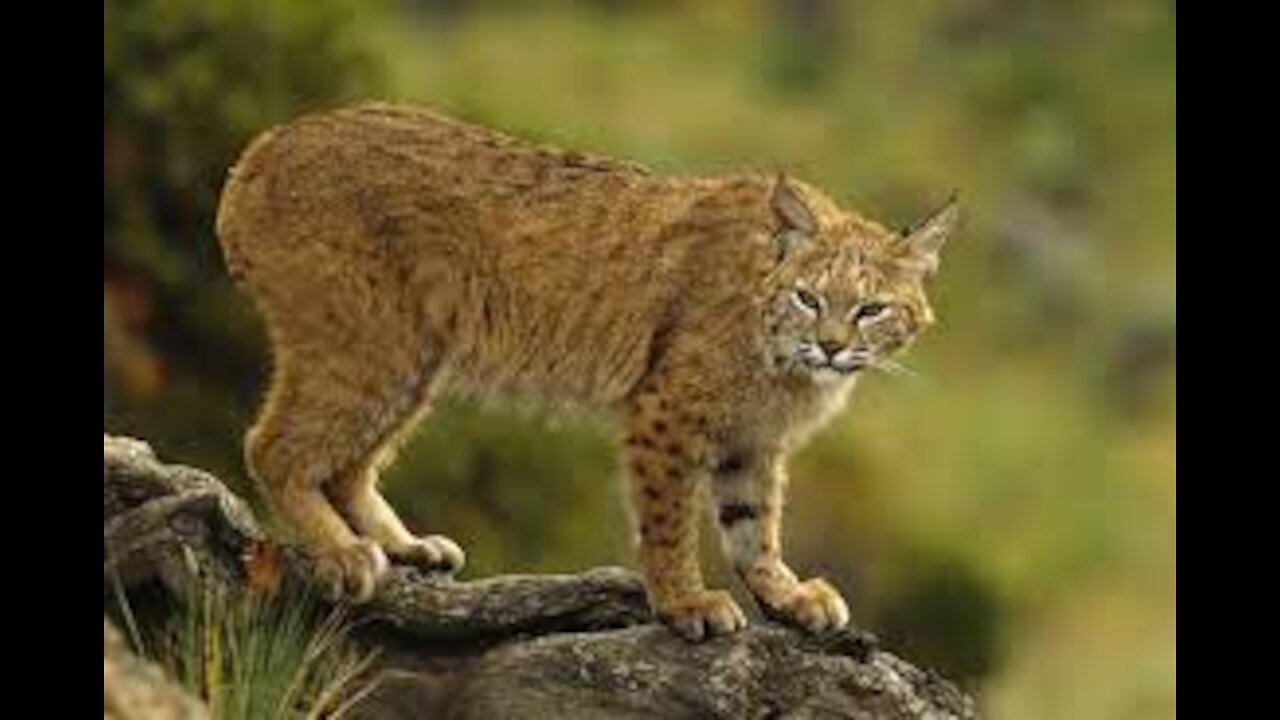Premium Only Content

The battle Between Bobcat and a house cat,Rare Encounter
The wildcat (Lynx rufus), otherwise called the red lynx, is a medium-sized feline local to North America. It goes from southern Canada through the greater part of the bordering United States to Oaxaca in Mexico. It is recorded as Least Concern on the IUCN Red List since 2002, because of its wide appropriation and huge populace. Despite the fact that it has been pursued broadly both for game and hide, populaces have demonstrated stable, however declining, in some areas.[1]
It has particular dark bars on its forelegs and a dark tipped, squat (or "bounced") tail, from which it infers its name. It arrives at a body length of up to 125 cm (49 in). It is a versatile hunter occupying lush territories, semidesert, metropolitan edge, timberland edge, and swampland conditions. It stays in a portion of its unique reach, however populaces are defenseless against nearby elimination by coyotes and homegrown creatures. Despite the fact that the catamount lean towards bunnies and rabbits, it chases creepy crawlies, chickens, geese and different birds, little rodents, and deer. Prey determination relies upon area and territory, season, and plenitude. Like most felines, the catamount is regional and to a great extent lone, in spite of the fact that with some cover in home reaches. It utilizes a few techniques to stamp its regional limits, including hook checks and stores of pee or dung. The catamount breeds from winter into spring and has an incubation time of around two months.
Two subspecies are remembered, one east of the Great Plains, and the other west of the Great Plains. It is included in certain accounts of the native people groups of North and Central America, and in the legends of European-slipped occupants of the Americas.
-
 0:57
0:57
ViralHog
5 years ago $0.32 earnedBattle Between Baby Alligator and Bobcat
1.11K4 -
 2:38
2:38
307 Gaming
4 years ago $0.02 earnedHouse Battle
3041 -
 54:47
54:47
Side Scrollers Podcast
13 hours agoSide Scroller Presents KING OF THE KART | MASSIVE MARIO KART TOURNAMENT
41.7K -
 4:12:33
4:12:33
Mally_Mouse
13 hours ago🔥🍺Spicy HYDRATE Saturday!🍺🔥-- Let's Play: Baldur's Gate!
34.2K3 -
 2:26:32
2:26:32
BooniesHQ
9 hours agoGame Of SKATE Shaun Hover Vs. Jeff DeChesare: Boonies Skate Night 1
108K5 -
 3:56:19
3:56:19
MissesMaam
4 hours agoAmong Us 3D (ft. Rumblers) 💚✨
11K1 -
 LIVE
LIVE
S0lidJ
4 hours ago🟢Live - S0lidj - Solo Snipes
49 watching -
 17:08
17:08
Exploring With Nug
1 day ago $2.74 earnedMassive Thunderstorm Hits During Search for Missing Georgia Woman!
27.5K1 -
![RCP #29🤟 [FR/ENG] 🤟 Satisfactory trying to grow a beautiful Factory, possible other Game later 🤟](https://1a-1791.com/video/fww1/98/s8/1/o/q/N/d/oqNdz.0kob-small-RCP-29-FRENG-Satisfactory-t.jpg) 8:05:52
8:05:52
Deaf Gamer Girl
10 hours agoRCP #29🤟 [FR/ENG] 🤟 Satisfactory trying to grow a beautiful Factory, possible other Game later 🤟
3.97K -
 LIVE
LIVE
Cewpins
4 hours agoSmoke Sesh!🔥Let's Get LIT!!!🍃420💨!MJ !giveaway
50 watching